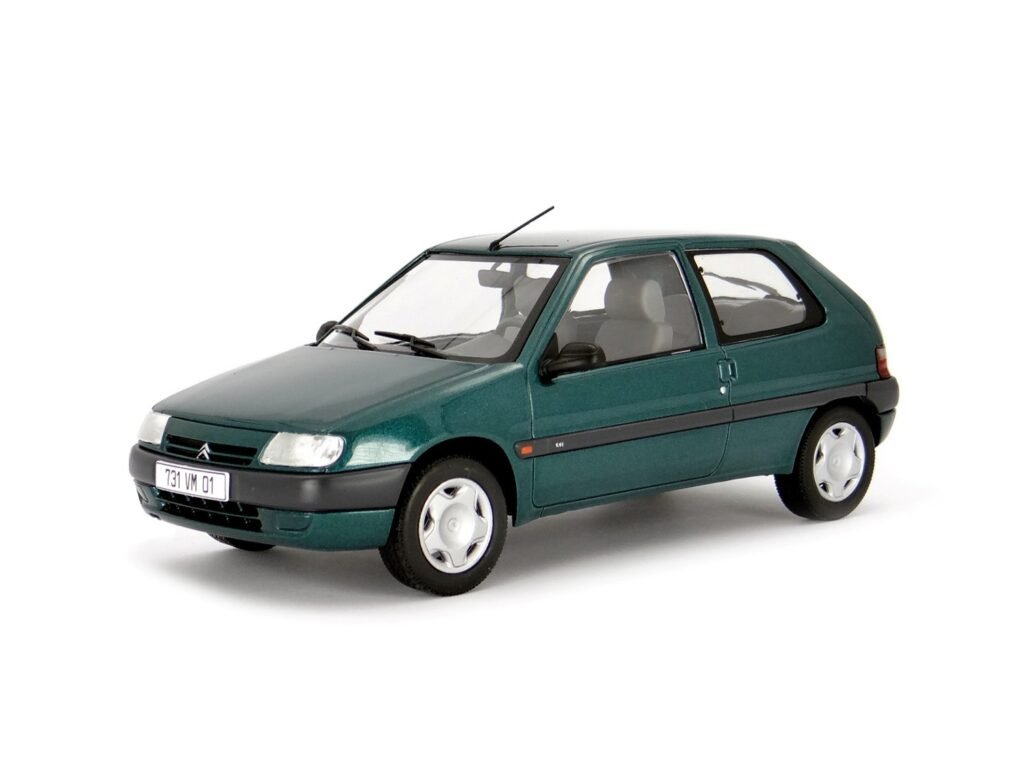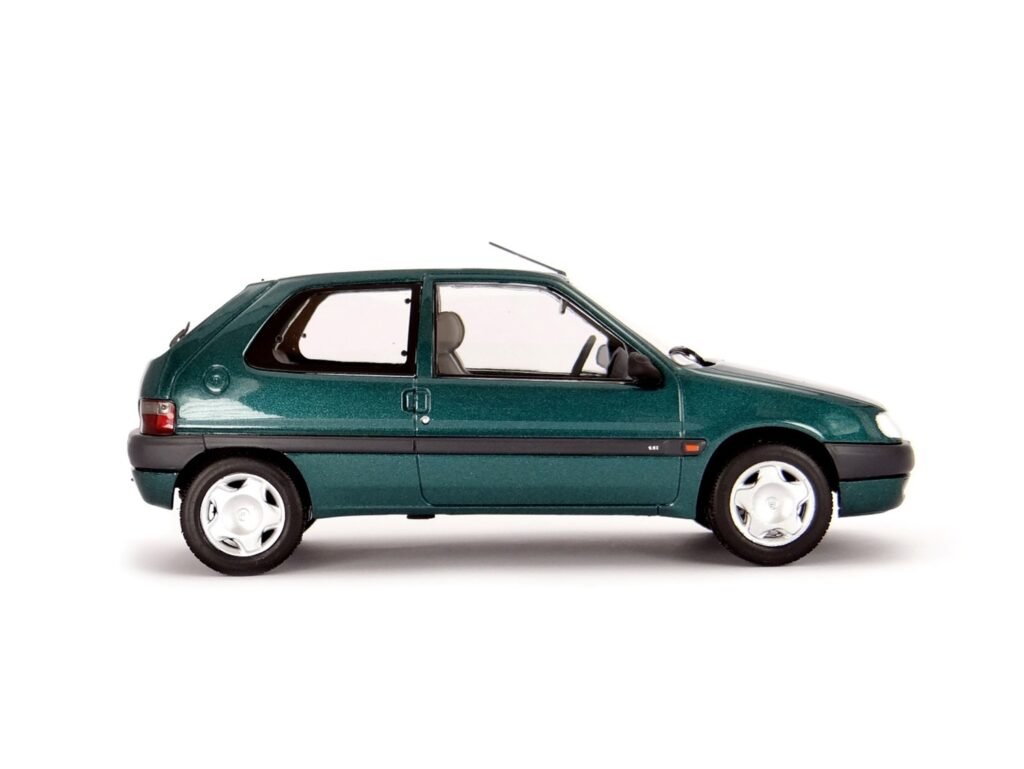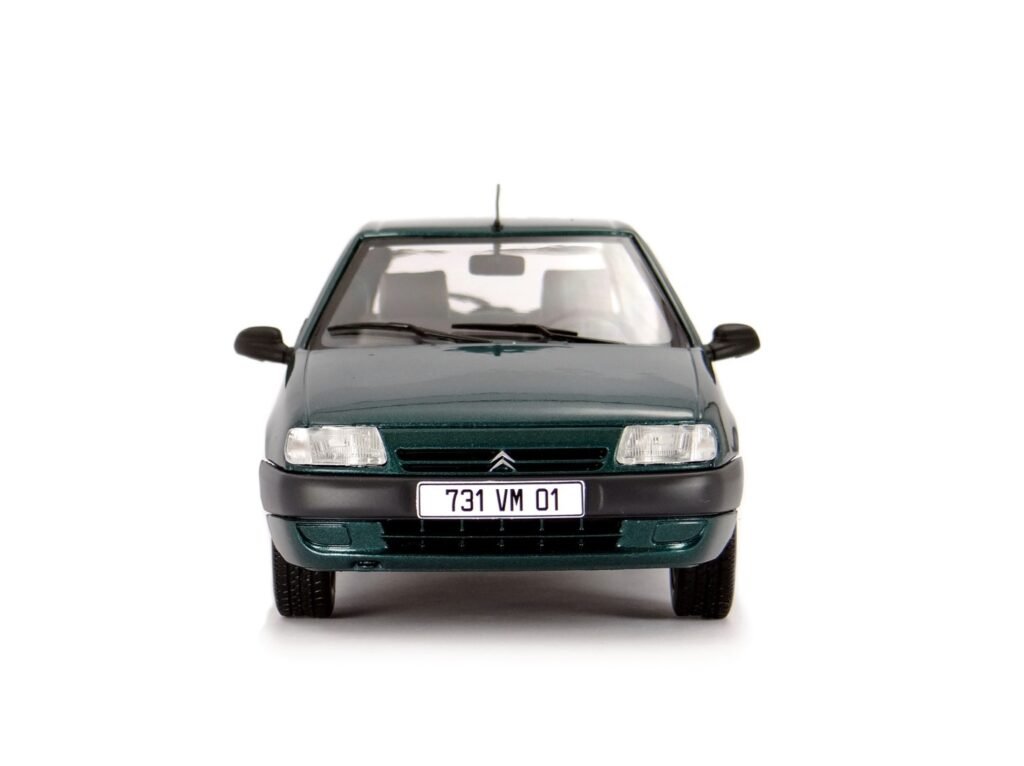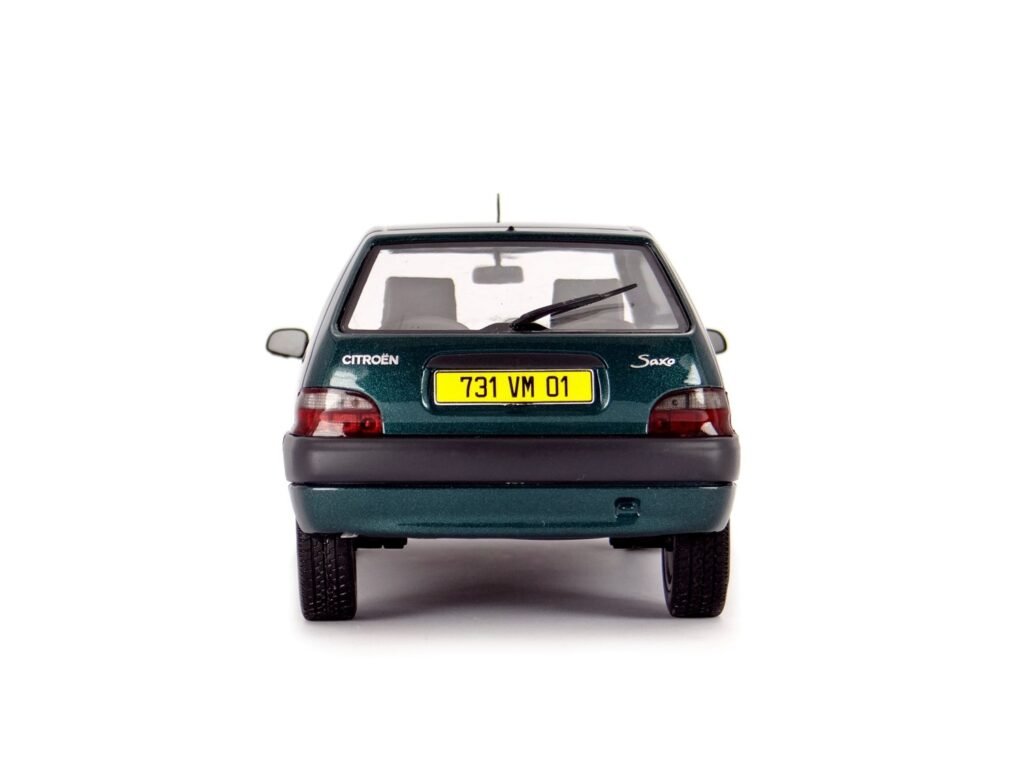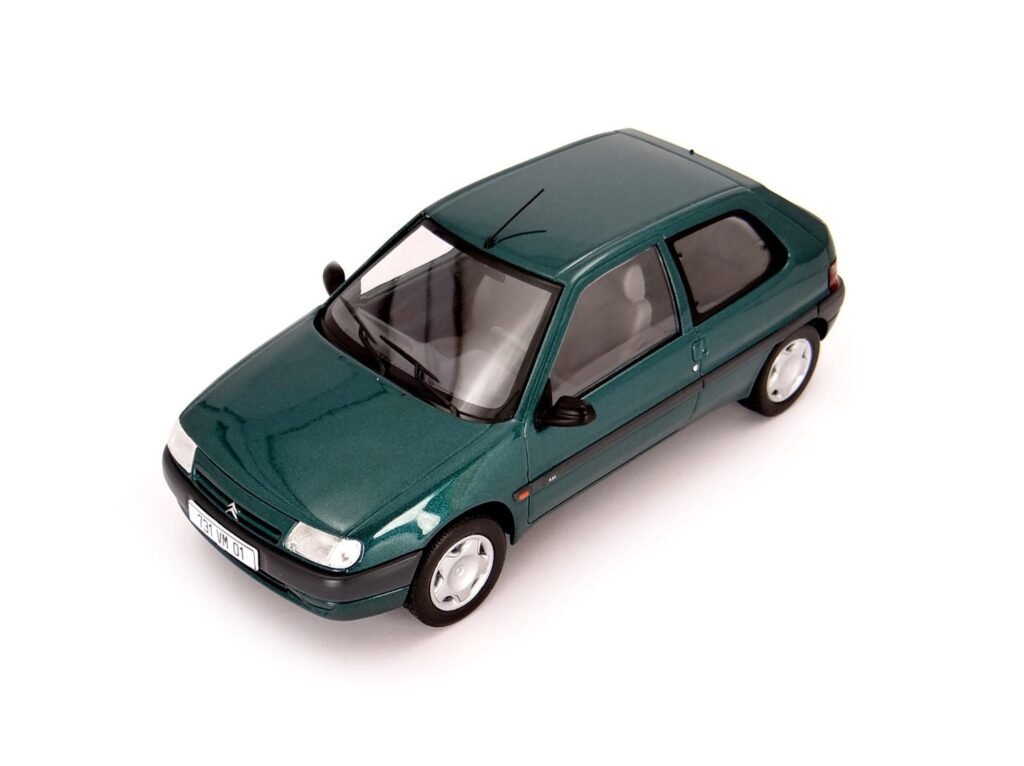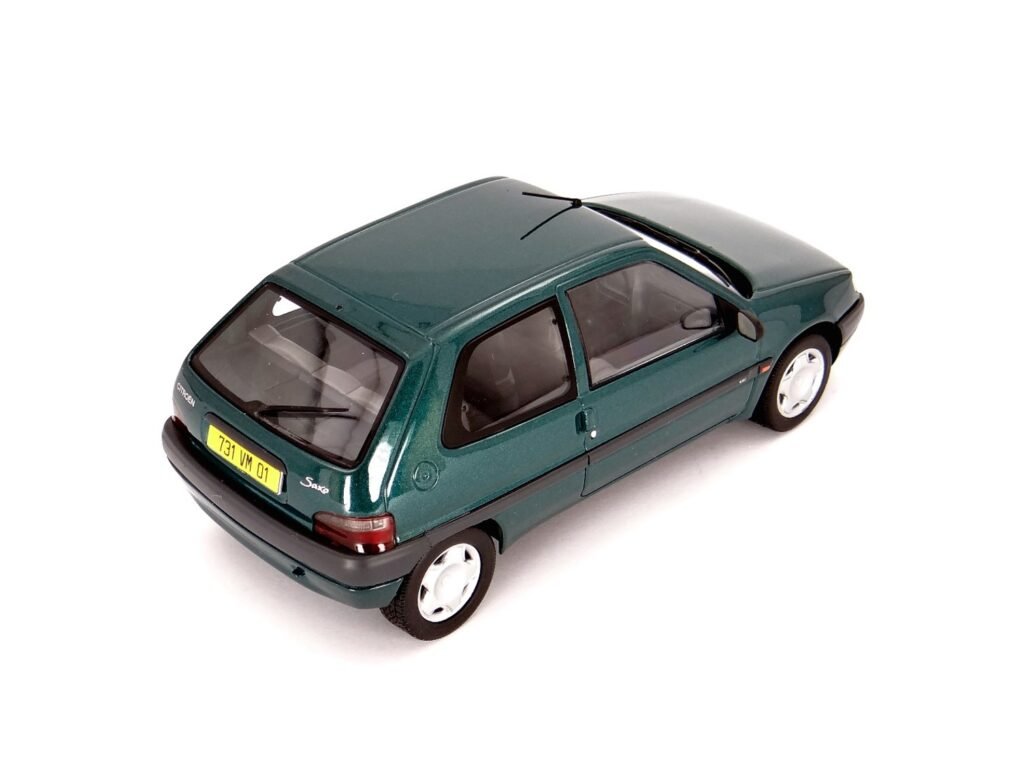Portfolio Citroena jest pełne niezwykłych i innowacyjnych samochodów. Citroen Saxo nie jest jednym z nich. Z pewnością jednak można go zaliczyć do jednego z najpopularniejszych modeli tej francuskiej marki.
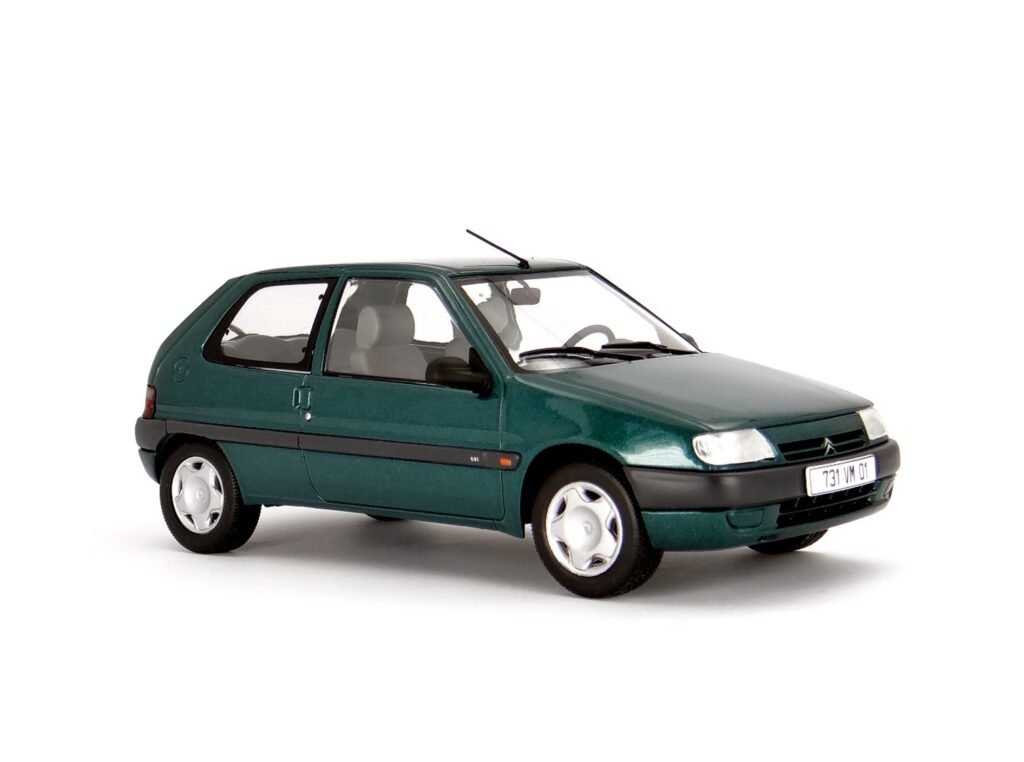
Saxo rozpoczęło swój żywot jako “projekt S8”, który miał zaowocować następcą popularnego modelu AX. Pierwszy prototyp oficjalnie pokazano podczas salonu samochodowego w Genewie w 1992 roku, natomiast wersja produkcyjna ujrzała światło dzienne pod koniec roku 1995. Najpierw do sprzedaży trafiła odmiana trzydrzwiowa, a parę miesięcy później dołączył do niej praktyczniejszy wariant pięciodrzwiowy. W porównaniu do kanciastego AX, Saxo wyróżniało się miękkimi i obłymi liniami. Choć daleko było mu do awangardy historycznych Citroenów, to jego wygląd wciąż posiadał niezaprzeczalnie francuski charakter.
Z technicznego punktu widzenia też nie było mowy o żadnej ekstrawagancji, bo Saxo miało być przede wszystkim proste i tanie. Auto było w gruncie rzeczy bliźniakiem Peugeota 106 zaprezentowanego 4 lata wcześniej. Oba modele dzieliły platformę, konstrukcję zawieszenia i silniki. Miały też bardzo podobny kształt nadwozia. Saxo różniło się od 106-tki głównie kształtem lamp, kształtem niektórych paneli nadwozia oraz projektem deski rozdzielczej. Było też o 15,4 cm dłuższe, co dawało 372 cm całkowitej długości i pozwalało na bezpośrednią rywalizację z innymi ówczesnymi autami klasy B jak Opel Corsa, Renault Clio czy VW Polo. Dodatkowe centymetry pozwoliły wygospodarować również bardzo duży jak na klasę pojazdu bagażnik o pojemności 280 litrów.
Paleta silnikowa Citroena Saxo obejmowała czterocylindrowe benzynowe jednostki z rodziny TU; 1.0i (50 KM), 1.1i (60 KM), 1.4i (75 KM) oraz 1.6i (90 KM). W 1996 roku w ofercie pojawiła się automatyczna skrzynia biegów, a także wolnossący diesel 1.5D (58 KM), chwalony za wysoką trwałość i bardzo niskie zużycie paliwa. W kontraście do superoszczędnego diesla, na szczycie gamy stała sportowa odmiana VTS, napędzana silnikiem 1.6 16V (120 KM). To na jej bazie powstawały odnoszące sukcesy rajdowe wersje Saxo S1600. W promowaniu modelu pomagała też seria markowych wyścigów „Saxo Cup”, rozgrywana od 1996 roku w siedmiu europejskich krajach.
Saxo było bardzo ciepło przyjęte przez rynkek, więc nie potrzebowało częstych modyfikacji. Jedyny większy lifting przeprowadzono w 1999 roku, kiedy zmieniono przednie reflektory, atrapę chłodnicy i kolor tylnych lamp. Produkcję Saxo zakończono w 2003 roku. Przez ten cały okres, samochód opuszczał francuskie zakłady w Aulnay-sous-Bois, a do roku 2000 również portugalskie w Mangualde. Auto zostało zastąpione przez dwa modele; C2 oraz C3 produkowane w tej samej francuskiej fabryce.
Dzisiaj, 21 lat po zakończeniu produkcji, Citroen Saxo jest już coraz rzadszym widokiem na naszych ulicach. Szczególnie w wersji sprzed liftingu. Pozostałe jeszcze egzemplarze są albo w fatalnej kondycji, albo w idealnym, kolekcjonerskim stanie.
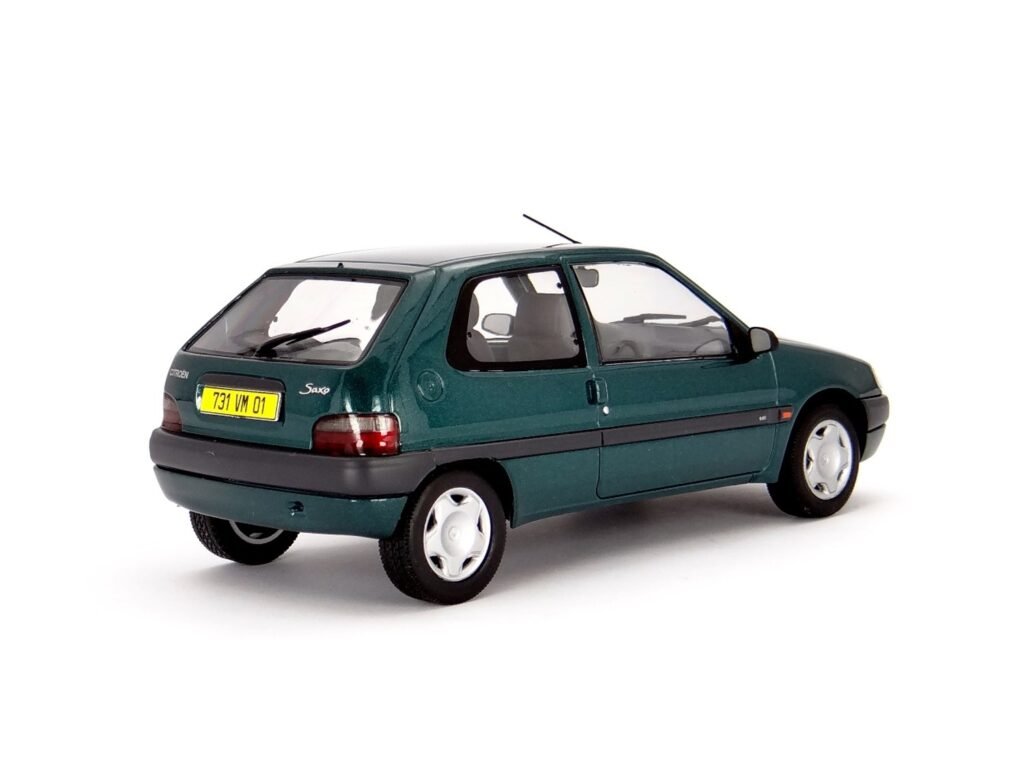
O miniaturze – Citroen Saxo
Odkąd 5 lat temu pokazałem na blogu pierwszy samochód w skali 1:24 w mojej kolekcji, sporo zmieniło się na rynku modeli diecast. W tym czasie skala 1:24 stała się pełnoprawną alternatywą dla klasycznych skal 1:43 i 1:18. Swoją popularność zawdzięcza przede wszystkim rozmaitym seriom gazetowym wydanym przez ten czas, które oferowały modele w tej skali. Jedną z takich serii była franuska „Collection Citroen” wydawnictwa Hachette, z której pochodzi prezentowany Citroen Saxo.
Ciemnozielony Citroen Saxo pochodzi z 55 numeru serii Hachette „Collection Citroen”, wydanego w grudniu 2021 roku. Model wygląda świetnie. Nie ma tutaj zupełnie niczego, do czego można się przyczepić. Odwzorowanie jest na najwyższym poziomie, dzięki czemu miniatura wygląda niezwykle realistycznie. Citroen Saxo to u mnie pierwszy model z serii Hachette Collection Citroen”, ale na pewno nie ostatni! Jestem z niego bardzo zadowolony i mam nadzieję, że Wam też się spodoba!
Kończąc już, przypominam o odwiedzaniu MiniAutomobili na Facebooku i Instagramie!
*** ENGLISH ***
Citroen’s portfolio is full of extraordinary and innovative cars. The Citroen Saxo is not one of them. However, it can certainly be considered as one of the most popular models of this French brand.
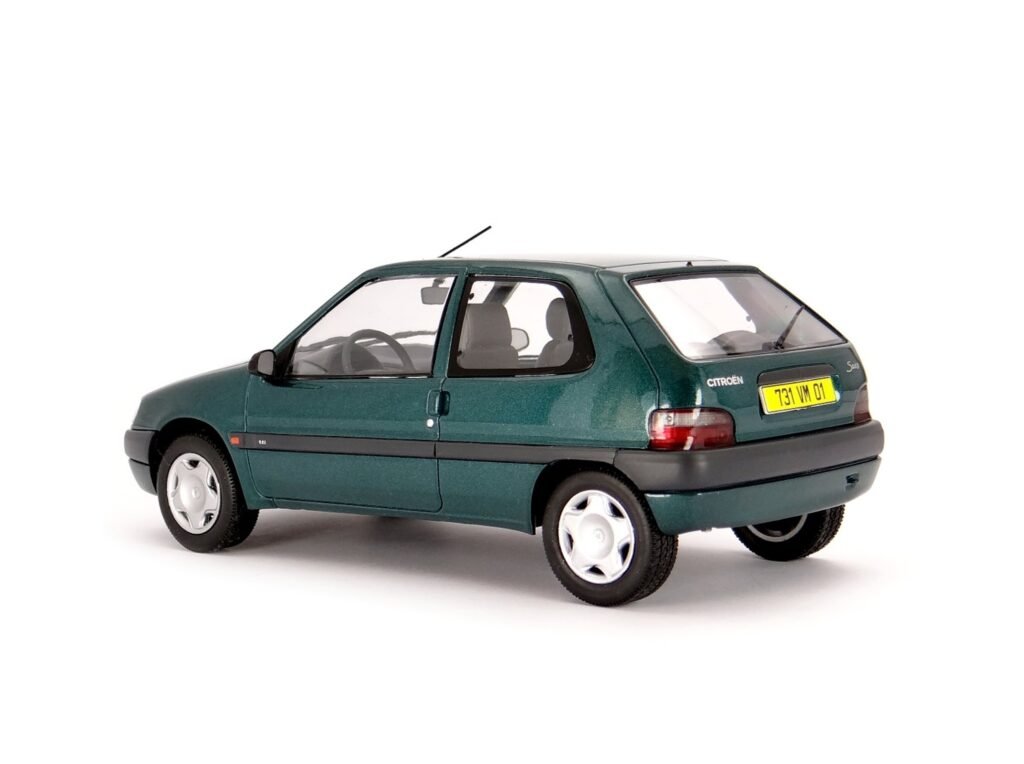
The Saxo began its life as the “S8 project,” which was intended to result in a successor to the popular AX model. The first prototype was officially shown at the Geneva Motor Show in 1992, while the production version debuted at the end of 1995. Initially, only the three-door version was released for sale. A few months later a more practical five-door variant joined the line-up. Compared to the boxy AX, the Saxo featured softer, rounded lines. Although it was far from the avant-garde designs of historic Citroens, its appearance still had an undeniably French feel.
From a technical standpoint there was also no talk of any extravagance, as the Saxo was meant to be simple and cheap. The car was essentially a twin of the Peugeot 106, which had been introduced 4 years earlier. Both models shared the same platform, suspension design and engines. They also had very similar body shapes. The Saxo differed from the 106 chiefly in the design of the headlights, some body panels and the dashboard layout. It was also 15.4 cm longer, giving it a total length of 372 cm. This allowed it to directly compete with other cars in the B-segment at the time, such as the Opel Corsa, Renault Clio and VW Polo. The extra centimetres also allowed for a spacious boot with a capacity of 280 litres, which was very large for its class.
The engine range of the Citroën Saxo included four-cylinder petrol units from the TU family: 1.0i (50 hp), 1.1i (60 hp), 1.4i (75 hp) and 1.6i (90 hp). In 1996, an automatic transmission was introduced, as well as a naturally aspirated diesel engine, the 1.5D (58 HP), praised for its high durability and very low fuel consumption. In contrast to the super-economical diesel, at the top of the range was the sporty VTS variant, powered by a 1.6 16V engine (120 hp). Based on this model, the successful rally Saxo S1600 was developed. The model was also promoted through the “Saxo Cup” series, a branded racing competition that began in 1996 and was held in seven European countries.
The Saxo was very well received by the market, so it didn’t require frequent modifications. The only major facelift took place in 1999, when the front headlights, the grille and the color of the rear lights were changed. Production of the Saxo finally ended in 2003. Throughout its entire production run, the car was manufactured at the French plant in Aulnay-sous-Bois, and until 2000, also at the Portuguese plant in Mangualde. The car was replaced by two models: the C2 and C3, both produced at the same French factory.
Today, 21 years after production ended, the Citroën Saxo is becoming an increasingly rare sight on our streets, especially in its pre-facelift version. The remaining examples are either in poor condition or in a perfect, collector’s state.
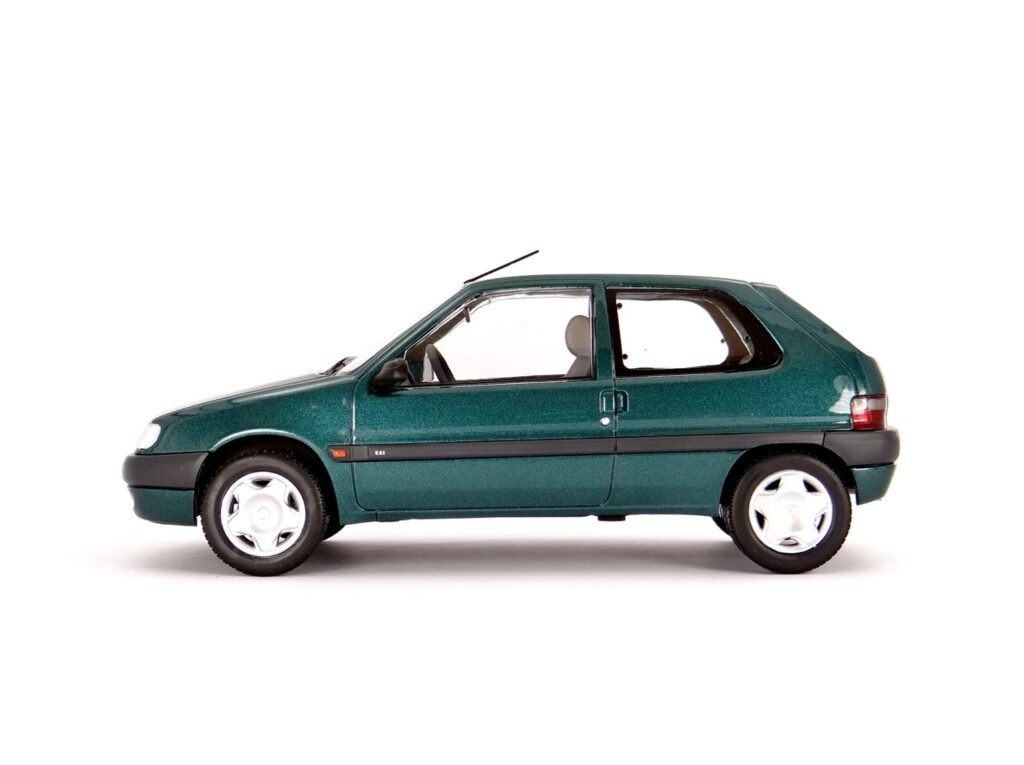
About the miniature – Citroen Saxo
Since I showed the first 1:24 scale car in my collection on the blog five years ago, a lot has changed in the diecast model market. During this time the 1:24 scale became a legitimate alternative to the traditional 1:43 and 1:18 scales. Its popularity is mainly due to various partwork series released over this period, which offered models in this scale. One such series was the French “Collection Citroën” by Hachette, from which the featured Citroen Saxo comes.
The dark green Citroen Saxo comes from issue 55 of the Hachette “Collection Citroën” series, released in December 2021. The model looks fantastic. There is certainly nothing to criticise here. The replication is top-notch, making the miniature look incredibly realistic. The Citroen Saxo is my first model from the Hachette “Collection Citroën” series, but it definitely won’t be the last! I’m very satisfied with it and I hope you will like it too!
Lastly, don’t forget to visit MiniAutomobile on Facebook and Insatagram!
